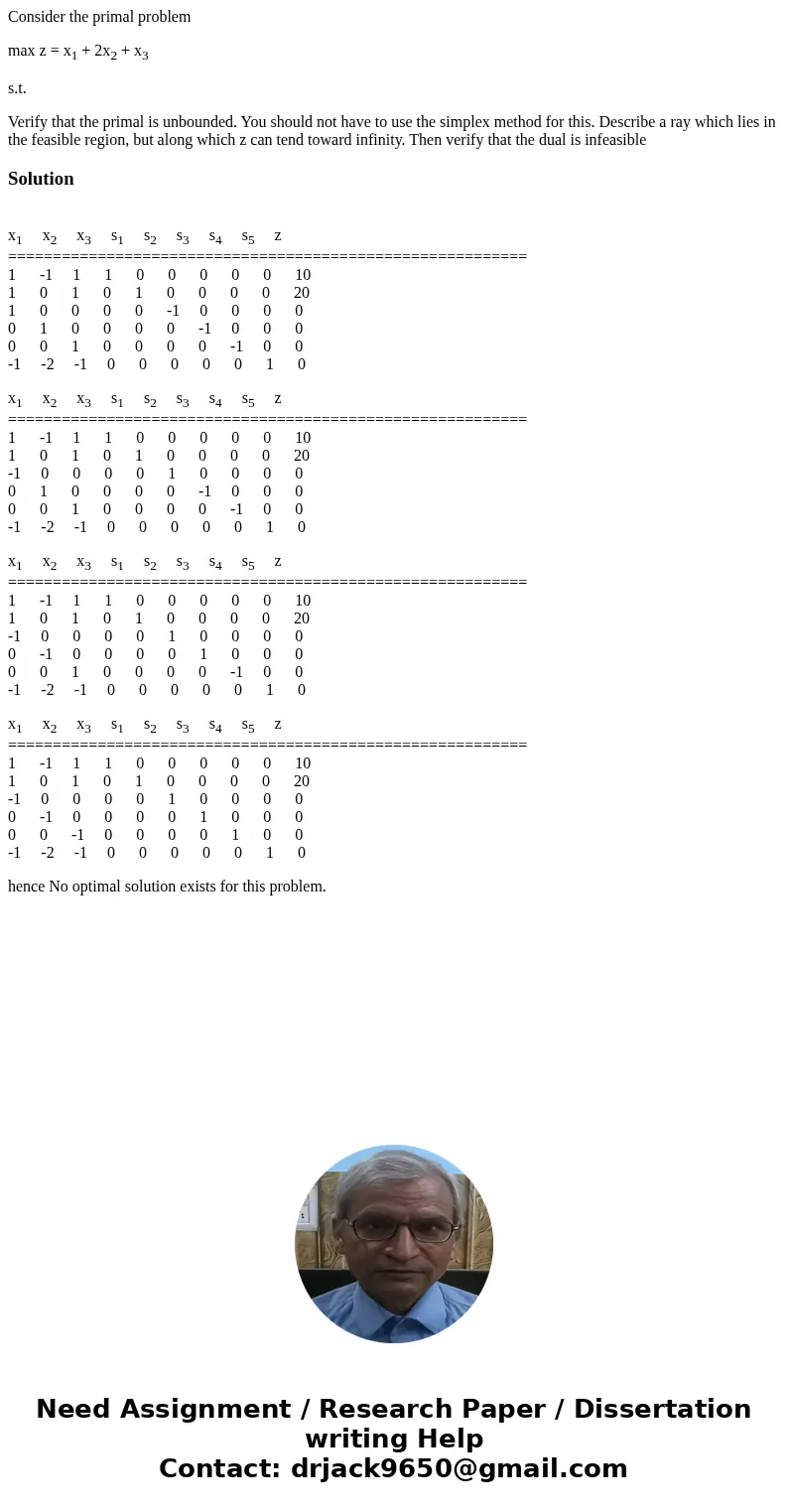Consider the primal problem max z x1 2x2 x3 st Verify tha
Consider the primal problem
max z = x1 + 2x2 + x3
s.t.
Verify that the primal is unbounded. You should not have to use the simplex method for this. Describe a ray which lies in the feasible region, but along which z can tend toward infinity. Then verify that the dual is infeasible
Solution
x1 x2 x3 s1 s2 s3 s4 s5 z
==========================================================
1 -1 1 1 0 0 0 0 0 10
1 0 1 0 1 0 0 0 0 20
1 0 0 0 0 -1 0 0 0 0
0 1 0 0 0 0 -1 0 0 0
0 0 1 0 0 0 0 -1 0 0
-1 -2 -1 0 0 0 0 0 1 0
x1 x2 x3 s1 s2 s3 s4 s5 z
==========================================================
1 -1 1 1 0 0 0 0 0 10
1 0 1 0 1 0 0 0 0 20
-1 0 0 0 0 1 0 0 0 0
0 1 0 0 0 0 -1 0 0 0
0 0 1 0 0 0 0 -1 0 0
-1 -2 -1 0 0 0 0 0 1 0
x1 x2 x3 s1 s2 s3 s4 s5 z
==========================================================
1 -1 1 1 0 0 0 0 0 10
1 0 1 0 1 0 0 0 0 20
-1 0 0 0 0 1 0 0 0 0
0 -1 0 0 0 0 1 0 0 0
0 0 1 0 0 0 0 -1 0 0
-1 -2 -1 0 0 0 0 0 1 0
x1 x2 x3 s1 s2 s3 s4 s5 z
==========================================================
1 -1 1 1 0 0 0 0 0 10
1 0 1 0 1 0 0 0 0 20
-1 0 0 0 0 1 0 0 0 0
0 -1 0 0 0 0 1 0 0 0
0 0 -1 0 0 0 0 1 0 0
-1 -2 -1 0 0 0 0 0 1 0
hence No optimal solution exists for this problem.

 Homework Sourse
Homework Sourse